Fear on Every Corner, the Final Days of the U.S. War in Afghanistan

In firsthand accounts, Afghan civilians and U.S. Marines describe the chaos and desperation outside Kabul's airport. The evacuation was marred by missteps, violence, and tragedy. Then a suicide bombing ripped through the crowd, killing and injuring hundreds. A bombing U.S. officials knew was coming.
By: Brian J. Conley, Mohammad J. Alizada, Abdul Ahad Poya, Mirzahussain Sadid, and Samira Nuhzat, Alive in Afghanistan, and Joshua Kaplan and Joaquin Sapien, ProPublica
This article was co-published with ProPublica, a nonprofit newsroom that investigates abuses of power.
This story contains graphic descriptions of injuries caused by a suicide attack.
On the afternoon of Aug. 26, 17-year-old Shabir Ahmad Mohammadi huddled with his family by a mosque near the Kabul airport. It was one of the final days of the American evacuation from Afghanistan. Their time to flee was running out.
Shabir volunteered to go to the airport alone. He hoped he could weave his slender frame through the crowds and persuade the American troops to help his family leave.
Once there, he joined thousands of Afghans packed into the last remaining entrance to the airfield, a narrow road surrounded by high walls and barbed wire. Down the middle, a sewage ditch swelled with desperate Afghans jostling for attention. The sun hammered the shadeless corridor. Armed Marines barked at the crowd to stand back.
Shabir held his documents tight and waded into the fetid water at the bottom of the ditch. He flung his arms in the air, crying out until his voice grew hoarse. Dehydrated, he feared he might faint and get trampled.
But if just one Marine would listen to him, he might get his whole family to safety, freedom, a better life.
On the ditch wall above Shabir stood Lance Cpl. Noah Smith, a lanky 20-year-old from Wisconsin wearing dark-rimmed spectacles and camouflage. As Smith looked over the masses below, he could feel the heat rising from their bodies. The air was thick with the smell of feces and sweat. He scanned the crowd intently, looking for documents and lifting out those who appeared to have the right records.
The threat of violence loomed everywhere, for everyone. Smith’s lieutenant had told him the Taliban would execute Afghans left behind. And every few hours, the Marines seemed to get a new warning of an imminent terrorist attack.
Neither Smith nor Shabir noticed Abdul Rahman al-Logari, an engineering student turned Islamic State militant, who had escaped from a prison on an American airbase just days before. Slipping through the crowd, Logari had rigged himself with roughly 20 pounds of military-grade explosives.
At 5:36 p.m., Logari stepped toward the Marines and blew himself up, unleashing a lethal torrent of ball bearings and shrapnel that ripped into the civilians and troops standing around him.
The blast killed 13 American service members, and estimates put the civilian death toll at more than 160. It was one of the most destructive suicide bombings on record and the deadliest day for American troops in Afghanistan in the past 10 years of the war.
ProPublica and Alive in Afghanistan interviewed scores of American troops, Afghan civilians, medical professionals and senior U.S. officials involved in Operation Allies Refuge, the evacuation mission carried out to close the Afghanistan War. The news organizations also reviewed 2,000 pages of materials from an internal military investigation obtained through a Freedom of Information Act request, including after-action reports, official timelines and redacted transcripts of interviews with more than 130 military personnel.
Taken together, the interviews and documents offer the most definitive account to date of the largest noncombatant evacuation in American history. From the beginning, the operation was beset by wishful thinking and miscommunication at the highest levels of government. After months of debate, a plan to conduct a large-scale civilian evacuation was not put in motion until just a few days before the country fell.
To be sure, more than 120,000 civilians were rescued through the Hamid Karzai International Airport over the course of about two weeks — a heroic effort involving far more people than initially predicted. But in documents and interviews, senior government officials indicate that this happened despite preparations by American leaders, not because of them.
The shadow of the Afghanistan withdrawal looms large over the administration of President Joe Biden as it navigates the growing conflict in Ukraine. The widely publicized chaos of the evacuation caused an immediate drop in Biden’s approval ratings, and Republican groups have signaled they intend to make it a wedge issue in future elections. The Pentagon has an ongoing investigation that may result in reforms to the intelligence community. U.S. agencies failed to predict the success of the Taliban advance. They failed, too, when it came to protecting Marines and civilians waiting at the gate.
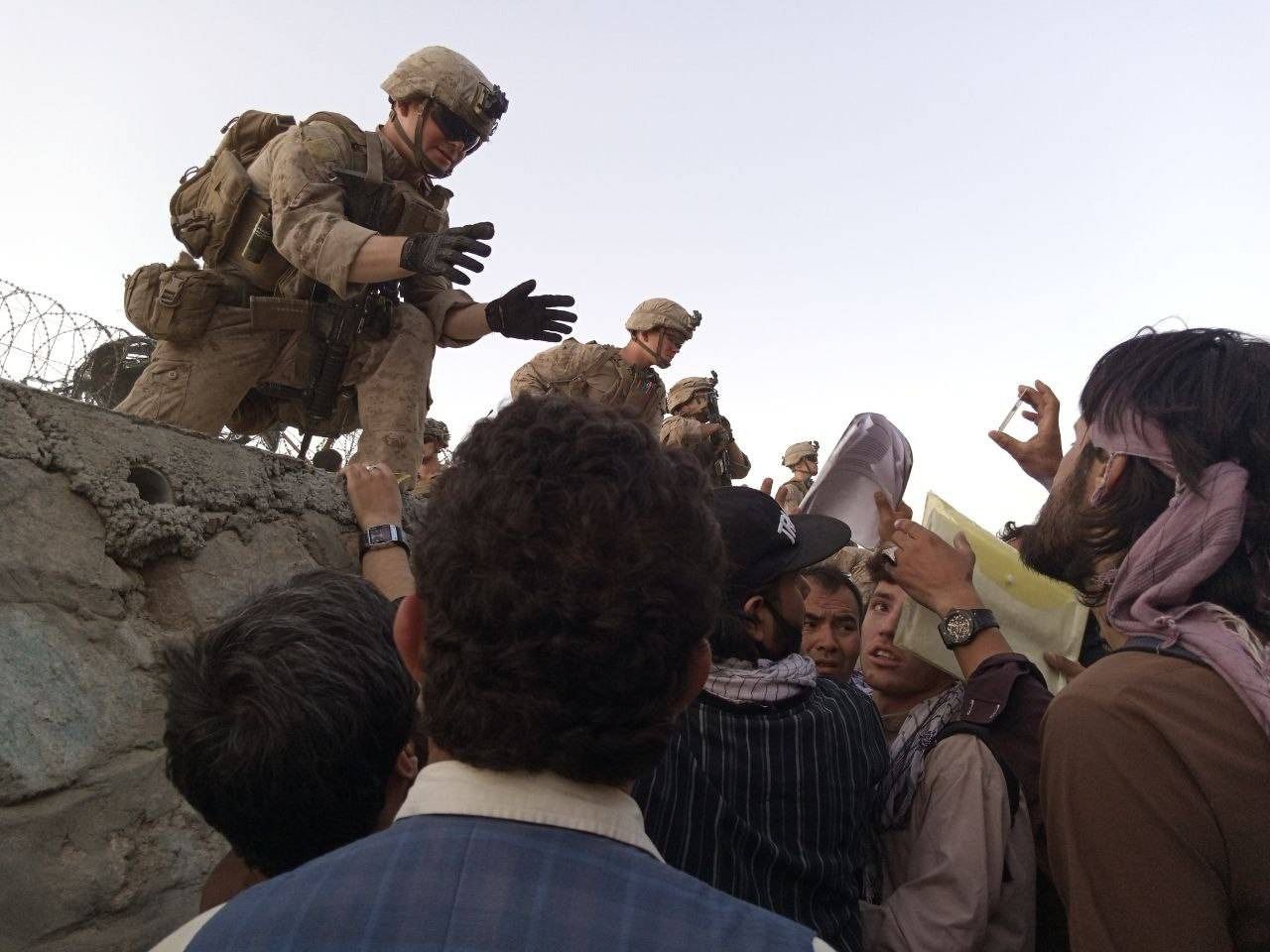
Military officials knew the airport was difficult to defend and susceptible to attack. But by the time Marines arrived to conduct the evacuation, Kabul was under Taliban control. It was too late to adequately fortify the airfield. Marines told investigators it became nearly impossible to install obstacles to protect troops and control the movement of civilians. It was “extremely dangerous to operate equipment” because of the large crowds, one combat engineer said.
Tens of thousands of civilians had already surrounded the airport, with no infrastructure in place to usher them to safety. Units like Smith’s, suddenly central to the operation, had not been included in the planning process and had not specifically trained for it. Officers made up a system on the fly.
Marines faced immediate obstacles. Food, water and equipment were scarce. They survived on little sleep, bunking on concrete floors or on the dirt near the sewage ditch. A debilitating stomach virus swept through their ranks. At critical airport entrances, Marines said a lack of State Department staff often slowed the evacuation to a crawl.
The threat of attack was constant. On Aug. 26, senior military leaders became all but certain that the Islamic State would attack that day. But in a high-stakes game of telephone, the intelligence got muddled on its way to the front lines. Troops received contradictory information or no information at all.
In their scramble to evacuate as many civilians as possible, local U.S. commanders decided to leave paths to the Abbey Gate airport entrance unguarded so Afghans could bypass Taliban checkpoints. As ProPublica and Alive in Afghanistan, or AiA, have reported, Logari, the bomber, “likely” used one of those routes to carry out his attack. U.S. Central Command spokesman Capt. Bill Urban did not specifically say who was involved in this decision, but he said that commanders on the ground were empowered to make such decisions themselves and that they “typically” informed Gen. Kenneth F. McKenzie Jr., head of Central Command. McKenzie, through Urban, declined an interview request.
Outside the airport gates, there was little in the way of aid, shelter or medical treatment for the thousands of Afghans. Some perished from heat exhaustion. Others were crushed to death. By the end, the last chance for escape came by wading into an open-air sewer and clambering through a hole in a chain-link fence.
“It was a humanitarian disaster waiting to happen,” said Brig. Gen. Farrell J. Sullivan, the most senior Marine officer on the ground.
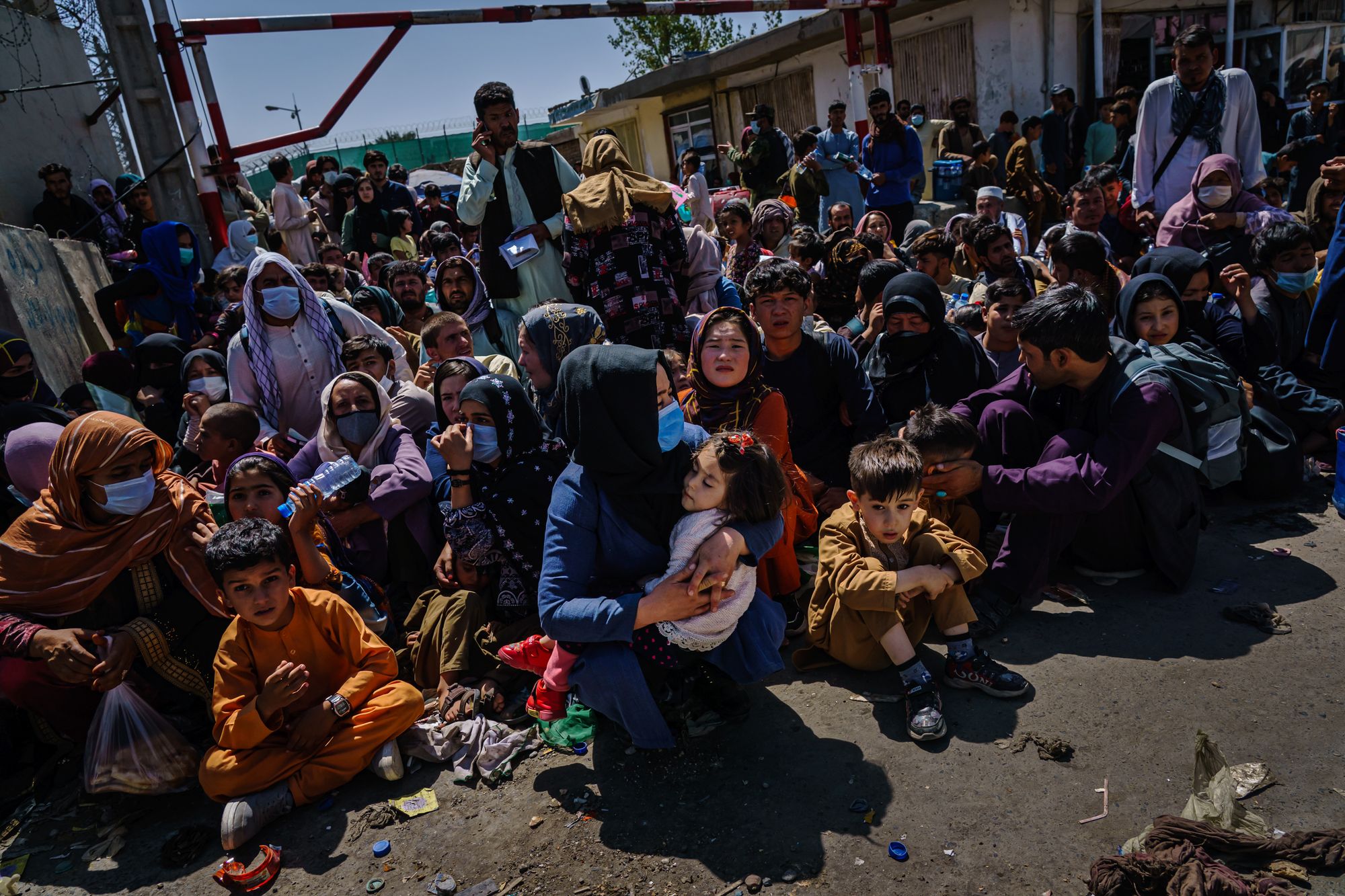
This is the story of that disaster and the weeks that led up to it, as told by the leaders in charge of the mission, the Afghans attempting to flee their country and the troops who risked their lives to help them.
Lots of Talk, Little Action
On the afternoon of Aug. 15, Ross Wilson, acting ambassador to Afghanistan, donned a bulletproof vest and raced from the U.S. Embassy to a nearby helipad. The guards securing the fortified compound had left their posts. Wilson’s colleagues were tossing reams of classified documents into bonfires in the embassy courtyard. Outside, in the city, Taliban fighters went door to door, accepting surrenders from Afghan officials holed up in government buildings. Kabul had fallen.
Wilson boarded a Chinook helicopter to fly him to safety at the Kabul airport. As he waited to take off, he got a message: The president of Afghanistan, Ashraf Ghani, appeared to have fled the country.
“It was shocking, really,” Wilson said in an interview with ProPublica and AiA. Just days before, Ghani had told him he wasn’t going anywhere.
Ghani’s sudden departure was the latest in a series of surprises that blindsided American officials and precipitated a calamitous evacuation effort.
The setbacks began almost as soon as Biden announced on July 8 that the military would leave the country by the end of August. That day, he assured the public that the Afghan army and government would continue to function and provide plenty of protection to ensure a safe withdrawal.
The week before, American forces abandoned Bagram Airfield — the hub of the NATO fight against the Taliban — without notifying the Afghan military ahead of time, Afghan officials said.
The unexpected exit sparked a crisis of confidence for the Afghan military, demoralizing troops and contributing to their decision to lay down their arms, according to Mohammad Hedayat, then the spokesperson for Afghanistan’s Second Vice President Muhammad Sarwar Danish.
“The U.S. forces leaving Bagram was the starting point of the collapse,” Hedayat said. Urban said the U.S. didn’t disclose the specific timing of its departure for safety reasons, but it “took great pains to ensure” that the Afghan military knew it was going to leave.
Soon, the Taliban were taking dozens of districts in provinces across the country. Hungry and low on ammunition, Afghan forces were surrendering without firing a shot.
On Aug. 4, Ghani told American officials he had no confidence the army would fight back.
Around then, 36 Afghan battalions suddenly vanished. “No one had any clue where they were,” one senior officer told military investigators. “No one from the units were answering their phones.”
For weeks, top U.S. officials, from the White House down, discussed whether to arrange a mass evacuation of American citizens and Afghan allies. Perhaps the most difficult question: when to start?
If the U.S. began moving people too early, it could “incite panic,” a senior administration official told ProPublica and AiA. “You lead to the collapse of the security forces. You lead to the collapse of the government.”
But if they waited too long, then the tens of thousands who risked their lives to help the American war effort could be left behind at the mercy of the Taliban.
The decision to evacuate the country kept getting pushed back.
Multiple high-ranking military officials, including Sullivan, blamed the State Department for failing to recognize the gravity of the situation and stalling on decisions about how to react.
“The DOS kept building a narrative supported by half-truths, decoupled from reality,” another military officer embedded with the embassy told investigators.
One senior State Department official, speaking anonymously, acknowledged to ProPublica and AiA that the department didn’t plan for a large-scale evacuation because it never “seriously considered” the Taliban could advance fast enough to necessitate one.
But senior officials in the White House and the State Department said military and intelligence officials failed to raise alarms about the speed of the evacuation and the Taliban takeover.
“No one raised with me concerns that the embassy was not with the program,” Wilson said. “I never heard that.”
Scott Weinhold, the department’s assistant chief of mission in Kabul, told ProPublica and AiA that the timing of the evacuation decision did not hamper military preparations anyway.
“I never once heard anyone say in a meeting or elsewhere that they couldn’t do something because a NEO hadn’t yet been declared,” he said, using the acronym for a noncombatant evacuation operation.
Urban, the Central Command spokesman, declined to make commanders who criticized the State Department available for interviews or to respond to department comments about the evacuation process.
In the end, U.S. agencies essentially planned the operation in just one week, military officials said.
It wasn’t until Aug. 13, after the Taliban captured 14 provincial capitals, that the State Department formally requested help from the Pentagon to begin the evacuation in earnest, according to the investigation. At that point, only about 2,000 Afghans had been evacuated. Only then did the military gain the authority to make security improvements at the Kabul airport, Urban said.
Two days later, when Wilson flew into the airport, it was already surrounded by civilians.
Previously, the military chose not to coordinate with the Afghan army to defend the airport in the event of an evacuation. “We didn’t want to let the cat out of the bag and let them know we were planning for a NEO,” Rear Adm. Peter Vasely, the top military leader on the ground, told investigators. Through Urban, Vasely declined to be interviewed.
But with Ghani’s surprise exit and the Taliban entry into Kabul, Afghan soldiers left their posts at Hamid Karzai International. Soon, terrified Afghans, Americans and other foreigners in the country rushed to the airport. By nightfall, they had breached its walls.
With only about 750 American troops on the ground, commanders worried that the crowd could overrun their command center or provide cover for a bomber. “We were desperate for manning,” one senior officer told investigators. “It got to the point that if you had a rifle, you were out pulling security.”
In what officers refer to as “the night of the zombies,” Marines and soldiers worked through the night trying to contain the crowd. The next day, civilians shoved their way through barbed wire and flooded onto the airstrip.
One officer recounted seeing a jet surrounded by civilians. The pilot signaled he needed to leave and began to taxi. As the plane took off, the officer watched Afghans clinging to it plunge through the air. The images soon rocketed around the globe.
Smith, the lance corporal from Wisconsin, watched it all unfold in amazement via live drone footage in Jordan. His brother had served 20 years in the Marine Corps, but Smith himself had never been to Afghanistan. He was stunned by the ferocity of the crowd.
Even Smith’s company commander, Capt. Geoff Ball, had not planned to go to Kabul. The week before, Ball was told by his superior officers that there was a less than 1% chance his company would deploy; he learned he would be going from a Washington Post reporter’s tweet. In an email exchange with ProPublica and AiA, Ball said his troops were well prepared, but unlike other units, they had not trained for an evacuation mission. Now his battalion, known as the 2-1, was going to be at the center of the most complicated evacuation since the fall of Saigon.

On Aug. 18, Smith boarded a plane packed so tight that troops had to climb over one another. He practically sat on a friend’s lap, a machine gun poking him in the back.
On board, the air crackled with fear and excitement. Almost no one had been in combat. Their adrenaline surged at the possibility. “Be ready for a fistfight,” one Marine remembered being told. He was expecting civilians to come charging onto the plane as soon as it landed.
“If We Stay, We Will Be Killed by the Taliban”
On the afternoon of Aug. 22, Shabir Mohammadi finished his daily English lessons and packed up his books to go home. Growing up in a cramped, concrete compound with plastic sheets for windows, he dreamed of leaving Jalalabad one day and studying abroad to become a doctor.
He biked home to find his family frantically packing to leave. They had decided it was too dangerous to remain in Afghanistan.
Shabir’s father, Ali Mohammadi, had served for more than a decade as an officer for the local Jalalabad Police Department. Shabir’s brother had worked as a driver for the United Nations Human Settlements Program, or UN Habitat, in 2013, taking development workers into Taliban-controlled areas to build homes and water canals. Between the two of them, they thought they might meet the U.S. requirements to get their families out.
The logic for leaving was simple: “If we stay, we will be killed by the Taliban,” Shabir recalled his family telling him.
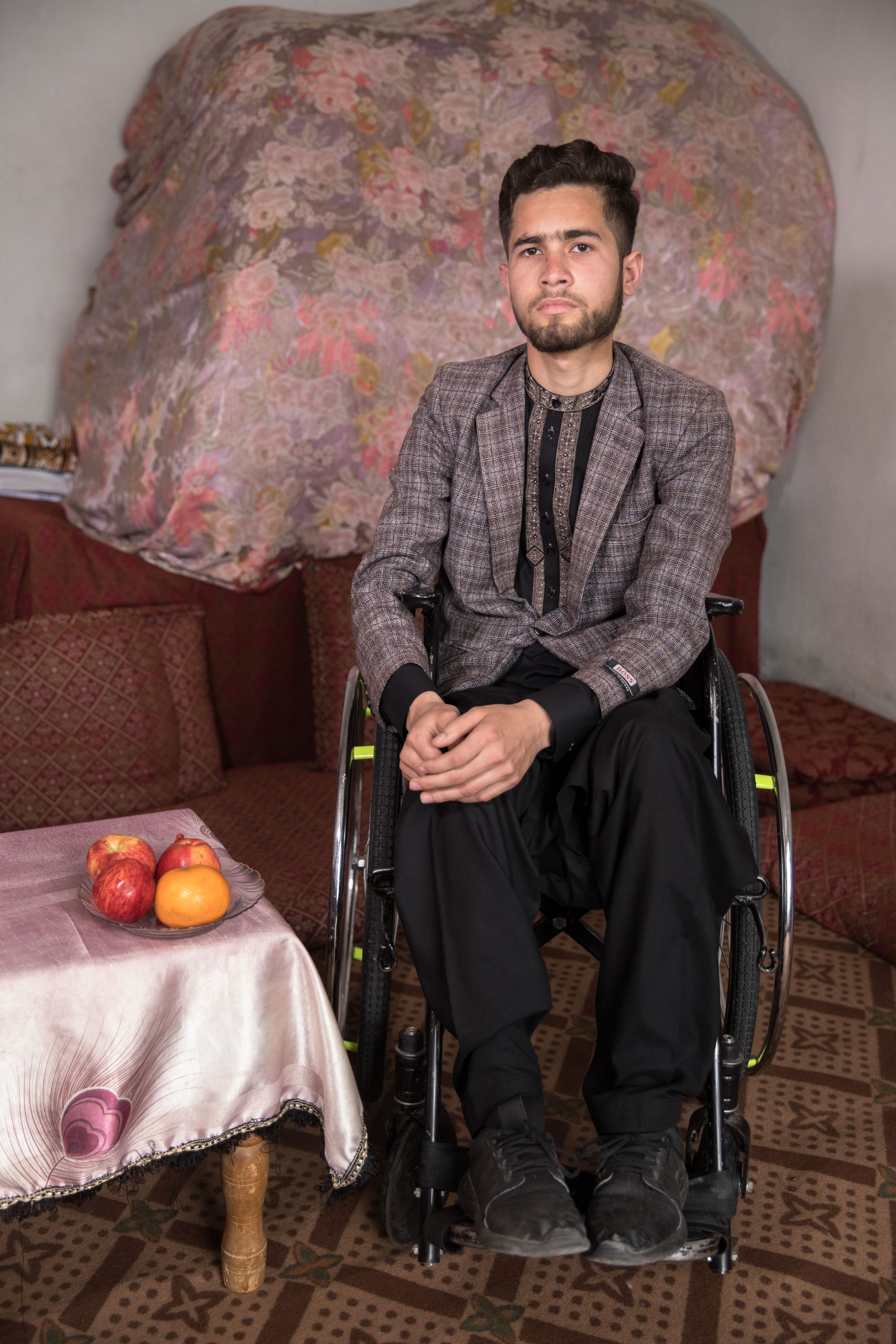
For years, the Taliban had been at war with the Afghan police, frequently targeting officers in covert and brutal killings.
“When they would catch a guy from the police, they would kidnap him or strangle him or garrote him,” said Nyazmohammad Mohammadi, Shabir’s older brother. “Or shoot him in the head.” Years before, Shabir’s uncle was badly burned when a Taliban suicide bomber attacked a fuel convoy outside Jalalabad as he was commuting to work.
The Mohammadi family pooled their savings and gathered what documents they could — a certificate from UN Habitat, records from their father’s training as a police officer. They took two sets of clean clothes each and set out to find transportation. They were in such a hurry that they left their home unlocked.
Under the best of circumstances, the ride to Kabul could cost 3,500 Afghanis, or roughly $40. But drivers were afraid to take the risk, forcing the Mohammadis to haggle for a fare more than five times the normal cost.
They packed 15 people into a Mercedes minibus, making their way along the hairpin turns and towering cliffs that punctuate the highway to Kabul.
Even for a country locked in a decades long armed conflict, the views out the window were jarring. They saw Afghan army trucks in flames on the side of the road. Long-haired Taliban fighters stood beside them, brandishing weapons and glaring at the passing traffic. The children panicked as the family struggled to comfort them.
“We were all crying and saying, ‘What happened to Afghanistan?’” Nyazmohammad said.
As the Mohammadis neared Kabul, they passed through a Taliban checkpoint where militants searched their car for evidence of allegiance to the American-backed government. By the time they made it into the city, it was near dusk.
Panicked civilians swarmed the streets. Cars drove against traffic on the opposite side of the road. Everyone seemed to be racing toward the airport. Taliban fighters harassed them along the way, screaming that the fleeing civilians were infidels and firing their weapons in the air. In one upscale shopping district, armed men pulled people over and looted cars, stealing cellphones and purses.
“Fear was on every corner of the city,” Nyazmohammad said.
Countless Afghans had packed up their belongings to seek a new life elsewhere. Each had their own reason to run.
Razia and Massood Haidari had married just days before the fall of Kabul. They had met at the Roushd News Agency, where they both worked as journalists. Massood’s family had not approved of their marriage because Razia was a working woman. The rift left them without family or financial support.
Now, with the Taliban in power, the couple worried Razia’s career and independence might put their lives at risk. “I made a decision to get out however possible,” Massood said.
Mujtaba Tahiri, a former electrical engineering student, had recently won a coveted green card in the U.S. visa lottery with the help of a cousin in Sacramento, California. He still needed to gather more records and complete a few additional steps to finish the process to leave the country. But with Afghan bureaucrats in hiding and the U.S. Embassy closed, his options seemed to have disappeared overnight. So Tahiri rushed to Hamid Karzai International with his family, hoping he had enough documentation to secure safe passage out.
The journeys of each family would intersect over the next several days as they fought desperately to flee a country in free fall.
100 Hours of Hell
On the morning of Aug. 19, Smith woke up from four hours of sleep on a treadmill in a gym at the Kabul airport. He soon learned he would be sent to Abbey Gate.
Smith and his fellow Marines scrambled to find transportation. With almost no military vehicles on the airfield, they hotwired trucks that had been left behind. Spray-painting them to prevent others from stealing what they had stolen for themselves, they packed into trucks tagged with phrases like “2/1 FUCK YOU” and sped off toward the gate.
By midday, Smith was standing in front of two 10-foot-high steel doors, separated by a few inches of space. Looking through the crack, the Marines could see eyes peering back at them. Fingers poked through, as if trying to pry the doors open.
The exact details of their mission were still a mystery to Smith and his company. Their only orders were to push forward: Just clear some space outside the airport walls.
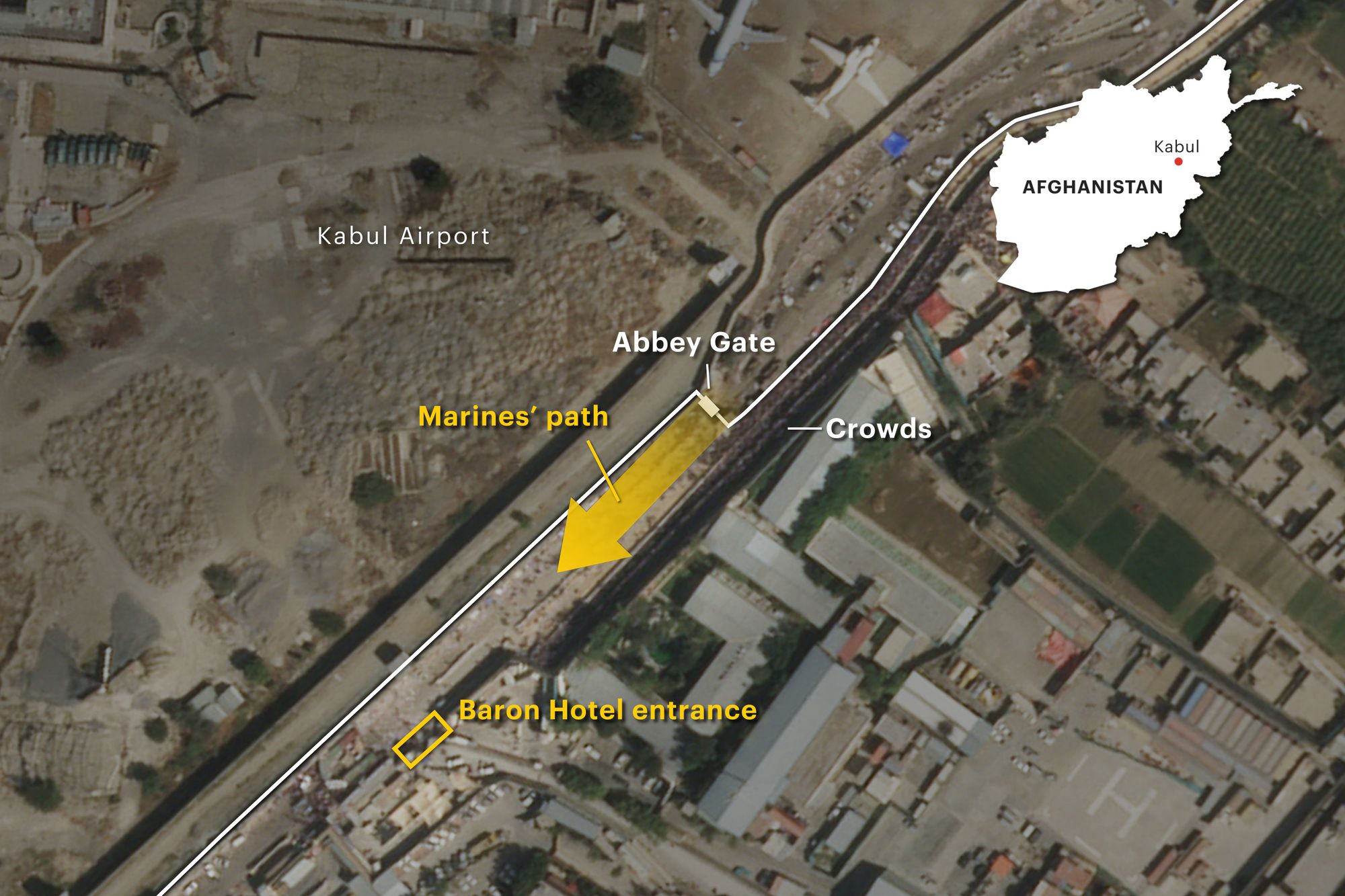
The doors opened.
For the first time, his unit came face to face with the crowd of thousands outside the airport.
The two sides collided and began pressing against each other, like opposing teams of rugby players locked in a scrum.
Canisters of tear gas flew into the crowd. The Marines scrambled to put on gas masks. The fumes only intensified the mayhem, with Marines and civilians choking on the smoke and vomiting. Troops got sucked into the crowd. Some were knocked to the ground, trampled.
“I’m going to die,” Ball thought.
Realizing they were overmatched, the Marines clambered to shut the doors. They reconvened only to receive a more challenging order: push out 200 yards from the gate to the Baron Hotel, a compound that housed British troops.
To do so, they decided to create a human wedge. The Marines came into formation, each gripping the straps of another’s tactical vest.
Reopening the gate, this time they inched forward in unison, gaining ground a half step at a time.
It took eight hours. But by 2 a.m., they reached the hotel. Ball later told investigators that seven civilians were crushed to death in the chaos of the day.
For the Marines, it was their first real taste of just how desperate and disorganized the evacuation would be. They were improvising the escape of tens of thousands of Afghans. They would need to hold their ground, vet civilian paperwork and patrol for terrorists, all at the same time.
For the first four days, Smith’s company did not rest. Staffing the gate around the clock, they chain-smoked cigarettes and popped caffeine pills to stay awake. Unsanitary conditions spawned a vicious stomach virus that incapacitated Marines up and down the chain of command. They would later refer to that draining stretch of days in the dust as the “100 hours of hell.”Smith, whose brother had fought the Taliban years before, now saw members of that force watching him through the scopes of their rifles. He tried to stay calm.
The U.S. military had formed an uneasy alliance with the Taliban outside Abbey Gate.
Taliban fighters with automatic weapons sat on rolling office chairs atop shipping containers near the Baron Hotel, creating a checkpoint for civilians at the gate.
Beyond the Taliban, a line of Marines stood on the east edge of what they began to call “Shit Creek,” a 7-foot-deep sewage canal that ran down the middle of an entry road outside Abbey Gate.
The Afghans gradually packed into this ditch, trudging through knee-high wastewater to catch the attention of the Marines above.
If the troops saw someone who they thought had the appropriate documents, they’d reach down and pull them out.
The civilians selected for evacuation then shuffled through a hole in the airport fence.
They were searched, then proceeded to another checkpoint staffed by the State Department, 300 yards into the airfield.
Graphics: Lucas Waldron, ProPublica. Satellite image taken Aug. 26, 2021, provided by Planet Labs PBC. Other Images: Marcus Yam/Los Angeles Times via Getty Images, Mirzahussain Sadid for Alive in Afghanistan, video courtesy of Razia Haidari.
The setup made Abbey Gate the most effective entry point to the airport by far, because it gave the Marines space to work while still allowing direct interactions with civilians.
But it also exposed them to attack.
“Marines at other gates may have been at risk one at a time, but not 30 people at a time the way they were at Abbey Gate,” Army Command Sgt. Maj. David Pitt told investigators. “What they were being asked to do was not in accordance with what anyone should have been asked. ... The risk was so high.”
There was little time for the young Marines to dwell on the danger. Trained to kill, they now had to work as immigration officers. It was not an easy adjustment.
“I don’t know what the fuck a green card’s supposed to look like. I don’t know what the fuck a work visa’s supposed to look like,” said Juan Castillo, a lance corporal from Bakersfield, California. “I don’t know what the fuck an I-9 whatever the fuck is supposed to look like. They were just like, ‘Hey, go figure it the fuck out.’”
The guidance on who qualified for evacuation was murky to begin with and seemed to change by the hour.
For example, the State Department had initially told eligible evacuees they could bring family members with them, but it did not clearly communicate who could be included, Marines said. Fleeing American and Afghan citizens would sometimes bring a dozen relatives along — grandmothers, nephews, cousins.
With no consular officials on the line to ask, it fell to the service members to decide who counted as family.
“Marines at Abbey Gate were forced to play God,” a senior officer later said. (The State Department said it gave eligible evacuees clear guidance on which family members they could bring.)
Civilians with enough paperwork to make it inside the gate then waited, sometimes for days, on sheets of cardboard laid out on the ground. But getting this far didn’t guarantee a flight out. State Department officials might still determine a family didn’t qualify.
In that case, the same Marines who had granted Afghans access to safety now had to escort them out of the airport and back into danger.
For many, that was the hardest part of the mission.
They kicked out families carting elderly relatives in wheelbarrows. They kicked out men shoving crumpled certificates of appreciation from the U.S. military into their hands or photographs of themselves in camouflage, surrounded by troops they’d worked for during the war.
“It got to a point where you had to kind of put your humanity away,” one Marine said. “You couldn’t look at these people as human beings because of the job we were doing.” He tried to imagine that he was moving cattle.
For Castillo, the son of undocumented immigrants, it felt personal. When he looked out at the sea of would-be refugees, he imagined his own family.
“I saw my mother, my father, in these people, and it hurts,” he said. “God knows it hurts.”
Many who had been rejected refused to leave. On the first day, Castillo tried to be polite. “I’m sorry, I can’t do anything,” he’d say. “I can’t even understand you. Please, you have to move.”
But he became desensitized, hardened. If asking didn’t work, he would yell. If yelling didn’t work, he got physical — pushing, dragging, throwing them into the dirt if he needed to. Sometimes he would shove a man into a group of civilians and watch them topple like bowling pins.
A couple of days in, the tragedy overwhelmed him. The State Department had turned down two women in their 20s and their little sister. One of the women got on her knees and pleaded with Castillo in English.
She said she and her sister had been raped by the Taliban; if they went back, it would happen again. They would be killed, she begged. Please.
His resolve broke. His voice cracked. It did not help that they were about his age and “beautiful,” he said. It took 45 minutes for him to escort them out, fighting back tears.
Afterward, Castillo went inside the gate, lit a cigarette and sat on a supply box out of sight from his peers.
He put his face into his hands and wept.
“I did a really good job,” he said later, allowing himself a begrudging kind of pride. “But at what cost? Just lowering your fucking human moral standards.”
“Oh My Child! Oh My Child!”
This was not how Razia and Massood Haidari envisioned their honeymoon.
A day after Ghani fled the country, they joined thousands of other Afghans who were gathering in front of the North Gate, another entrance to the airport.
The gate was guarded by a combustible mix of sworn enemies. As Marines processed civilian paperwork, the Taliban provided security along with so-called Zero units, an Afghan paramilitary group backed by the CIA.
Razia jumped up and down at the rear of the crowd, waving her documents in the air. When she finally got close enough to speak to the Americans, they told her to come back in a week.
Suddenly, shots rang out. Terrified and gasping for breath, Razia ran back to her husband. The Zero units had fired into the crowd, she said. (A Marine later told investigators that the military treated multiple civilians a day who had been shot by Afghan forces at the North Gate.)
The Haidaris were determined to stay and plead their case. But by nightfall, they still hadn’t made any progress. Now they had no place to sleep.
A nearby car wash offered old mattresses for rent. But the couple weren’t sure how long their money would hold out. They could barely afford to eat. A twin bed was out of the question.
Instead, the Haidaris rested their heads on each other’s laps, sleeping in shifts beneath the artificial glare of floodlights outside the airport. Massood draped his scarf over his wife to keep her warm. The first night, Razia woke up amazed to find her husband snoring peacefully, almost as if they were back home.
For the next several days, the couple competed with other Afghans to stand out, surviving on flatbreads and pita sandwiches they bought from street vendors. The food got mixed in with dirt, making Razia sick. She tried not to eat too much to avoid relieving herself. There were no toilets. The civilians used abandoned homes and street corners, which quickly turned into revolting open-air latrines.
Even for those who had formally applied to immigrate to the United States, navigating the improvised process could feel futile.
At the same gate, Mujtaba Tahiri, the former engineering student who won the green card lottery, was unable to get his family past the Taliban. Taliban fighters called the civilians traitors and infidels, sometimes beating people over the head with long metal poles.
The crowd around the Tahiris grew so tight that they struggled to breathe. They said they saw infants crushed to death in the mob. “Oh my child! Oh my child!” one mother screamed, clutching her baby to her breast. She ran away from the gate in tears.
Tahiri’s brother, Mustafa, did not want his own small children to meet the same fate. “I was afraid my kids would be trampled,” he said. “So we went home.”
After a few days, the Haidaris had begun to lose hope. They had almost run out of money. Razia was fighting a skull-crushing headache. She grew faint under the August sun.
“If you were lucky, there would be some wind,” she said.
They were inspired by the resilience of one woman who appeared to be about eight months pregnant. As she slipped in and out of consciousness, her husband held a wet scarf to her head.
Massood turned to Razia. “We’re not even as brave as her,” he told her. If that woman could do this, so could they.
The Mohammadis, too, were outside the airport, searching for drinking water. When they managed to secure a bottle, the family shared it between the 15 of them.
“We never had enough water,” one Navy corpsman told investigators. “During high noon there was no shade to be found, and people would start dropping.” Medics were overwhelmed by waves of civilians suffering from heat exhaustion. Another military medical team reported treating over 180 Afghans in those early days of the operation.
Eventually, Razia fainted, crumbling beneath the punishing heat. Massood picked up his wife and carried her to a taxi to take her to a clinic.
On the way, the cab driver gave Massood a tip. “Go to Abbey Gate,” he said, where “foreigners are dealing directly with Afghans.” There were no Zero units in the way.
Doctors at the clinic hooked Razia up to an IV and gave her fluids. Afterward, Massood took her to his aunt’s house near the airport to recover. When she woke up a few hours later, Massood told her about the new gate.
Her eyes widened with optimism. This was their chance. She wanted to leave immediately. Massood tried to persuade his wife to stay, to get well first. But she was adamant.
They left before dawn, making their way through the crowds toward what they hoped would be their best chance at escape.
“I Wasn’t Told Shit”
As Abbey Gate became the entrance of choice for more and more Afghans, the crowd swelled, putting the lives of both civilians and Marines at greater risk.
The State Department checkpoint became a bottleneck. Marines said consular officials there disappeared for 12 hours at a time.
“They would come out and just be like: ‘Gate’s closed. Gate’s closed until further notice,’” one senior staff Marine officer said. “Or they would just leave.” (Wilson, the ambassador, said that the State Department had plenty of staff on the ground and that department and military leaders jointly decided when to send them to the gates.)
Closing the gate could mean death for someone waiting to go through it, Marines said. With no release valve, there was simply no place for the Afghans to go.
During one of these closures, a Marine corporal saw a heavyset man in his late 20s pinned against a retaining wall, screaming. He rushed over to try to help him. But the man was stuck. As the corporal tried to help him out and give him water, the man went limp.
He lost consciousness for 30 seconds, woke up and began thrashing wildly, swinging punches at the crowd engulfing him. “He went down again,” the corporal said. “And then he just never came back up.”
The situation was about to become even more dire. By the end of the day on Aug. 24, the other two main entrances to the airport closed for good.
“We didn’t want to plan to be the last ones operating,” one officer later told investigators, “and having the massive surge of humanity be solely at Abbey Gate.”
But that surge came, and when it did, there was only one way to hold it back. More Marines had to go to the front line. The young troops stood between the masses and the airfield, forming a human wall.
Commanders recognized the dangers immediately. A single terrorist in the crowd could kill dozens. They discussed last-minute security improvements, like installing obstacles to bring order to the line and better protect Marines, but moving heavy equipment through thousands of civilians would be impossible.
“If we’d been there two weeks before, there’d have been sandbags all over the place,” the senior staff officer said. “Shit should’ve been set up.”
As the end of the evacuation drew near, American intelligence determined that Islamic State fighters had holed up in a Kabul hotel, planning an attack.
“We realized on the 25th that they were ready to execute,” Vasely, the top military leader on the ground, later said.
That night, some commanders received a briefing with a description of a possible bomber. But the intelligence got muddled or evaporated altogether on its way to the troops. Some Marines heard the warning from an immediate superior. Some heard about it from a peer. Some heard nothing at all.
“I wasn’t told shit,” one Marine said. “No one around me, at least, was ever briefed about a guy or a bag or anything.” Others recalled a wide array of conflicting descriptions of the person they were supposed to be looking for.
That night, an ambulance was sent to wait at Abbey Gate in case of an attack. With the threat building, Vasely and Sullivan, the Marine general, discussed closing it permanently, according to the military report. Sullivan told the admiral he’d work on it.
Around 10 p.m., Ball sent a message to his subordinates: “Legitimate SVEST threat on Abbey,” referring to a suicide vest. Marines stopped operations but stayed on the line, crouching on one knee behind the concrete retaining walls.
In the dark, Smith and his colleagues took turns sticking their heads out, their headlamps lighting up scared faces in the crowd.
Around 3:15 a.m., Ball received another warning, saying a suicide attack was “imminent.” About 20 minutes later, the State Department issued a warning online: “U.S. citizens who are at the Abbey Gate, East Gate, or North Gate now should leave immediately.”
All the Afghan civilians knew was that their chance to get in the airport was coming to an end. Some asked Smith when the line would start moving again. Having no idea, he made up an answer: Everything would go back to normal at sunrise.
In the morning, Sullivan came back to Vasely with bad news. British troops weren’t ready to leave yet. If the gate closed, they would be stranded in the Baron Hotel with no path to safety. They had to stay open until nightfall.
Snipers in a tower overlooking Abbey Gate were told to look for a man with a shaved head and black clothes. Around 8 a.m., they thought they spotted him and passed it up their chain of command.
They never heard back. After a couple hours of waiting, they lost sight of him in the crowd.
For his part, Smith had been told to be on the lookout for a bag with white arrows on it. Given the number of warnings he’d received over the past week, it was hard to tell how seriously he should take it. But he tried his best.
“There were so many people and so many bags,” Smith said. “People were running for their lives. Everyone had a bag with them.”
Among them were the Haidaris, who were now traveling with three of Massood’s young cousins. They had received an email from the Italian government, saying Italy would accept them as refugees because journalists were being threatened by the Taliban. Some of their colleagues at the news agency had already made it through that morning. The email instructed them to wear red wristbands to identify themselves to the Italian soldiers.
At 12:50 p.m., the Pentagon received its most alarming piece of intelligence yet. The Islamic State intended to attack that day. The group was preparing a celebratory video to send out afterward. An assailant was traveling from 6 miles to the southwest.
Vasely was notified. At 1:10 p.m., the senior medical officer on the airfield got a call from Vasely’s office, telling him that a mass casualty was coming — possibly within the hour.
Medics had staged stretchers in the rear at Abbey Gate and brought up vehicles to evacuate casualties. Anticipating an attack, one company commander began rehearsing in his head what he would say to his troops after it happened.
At his home in Kabul, Mujtaba Tahiri was taking a shower. He wanted to look presentable for the Americans. This could be his last chance to make it out. He changed into clean clothes and took his family through a route that bypassed the Taliban checkpoint, arriving at Abbey Gate.
Several women lay motionless on the ground. People walked right over them. The Tahiris took a deep breath and waded into the crowd.
Around 2 p.m., Ball issued yet another warning, his most specific yet: A bomb will go off in 10 minutes. Operations ground to a halt. The Marines hid behind concrete barriers and waited.
Ten minutes passed. Half an hour. Nothing happened.
The evacuation resumed.
In the crowds, the Mohammadis grew frustrated. Traveling with 15 people made it impossible to maneuver to the gate. But Shabir had an idea. He spoke a few words of English. If he went alone, maybe he could convince the Americans to let his family in. They agreed to rendezvous at a mosque in the area. Shabir collected their documents and pushed ahead.
Nearby, the Haidaris waited for the Italians, just above the canal. Waving their wristbands and crying out for attention, they searched for someone to help them.
But the crowd had reached a fever pitch. People shoved each other to get closer to the Marines. Troops enlisted an interpreter to help calm them. “Stop pushing,” the interpreter shouted. “Please calm down and give some space. ... You are hurting women and children!” When it didn’t work, he broke down in tears, apologizing.
Just then, a Marine saw Tahiri frantically waving his documents and called him over. He took off his shoes, slung them over his shoulder, lifted his pant legs and stepped into the water.
At that moment, Logari detonated himself, sending a cloud of ash, dirt and body parts 20 feet in the air. The wave of heat, ball bearings and shrapnel whipped through the densely packed corridor. Within seconds, hundreds were wounded or dead.
“We Were at the Front Line of a Battlefield”
For a moment, a deafening silence came over Abbey Gate, as if a vacuum had sucked all the sound out of the air.
In the milliseconds that followed, Massood Haidari thought a flashbang grenade went off. Then he felt something hit him in the gut. It was a decapitated head.
Smith pulled his left pant leg tight against his skin to check for wounds. A dark red stain bloomed through the camouflage.
A tear gas canister, punctured by shrapnel, sent toxic smoke spraying into the air. A Marine ran toward the Baron Hotel with his back on fire. Another, missing the lower half of his face, stood above the ditch. His eyes were vacant. He had not yet realized what happened to him.
Then, the air came alive with bullets snapping overhead as Marines and British forces opened fire.
“It sounded like a shooting range,” said one Marine who was knocked momentarily unconscious by the blast. “An overwhelming amount of gunfire, everywhere.” He hid behind the ditch wall until the tear gas gave him some cover, then sprinted into the airport.
Shabir made it a few steps and collapsed unconscious in the ditch, feeling like he had been shot in the back.
“It was like we were at the front line of a battlefield,” Massood said.
He pulled his cousin Ali Reza out of the canal and grabbed his wife’s hand. Her face was wet with someone else’s blood.
They saw bullets hitting the fence overhead. They kept their heads down and ran north, trying to shield themselves by hiding in the middle of the mob. They made it around the corner. But they lost sight of his cousin.
Soon, hundreds of civilians joined the Haidaris there, frantically searching for their relatives or carrying the wounded in their arms. A wheelbarrow held a man torn to shreds, with only his torso intact. They saw a British passport through the mesh of a bloody fanny pack wrapped around his waist.
Nearby, Maisam Tahiri was looking for his uncle Mujtaba, trying not to panic. But Mujtaba wasn’t picking up his phone.
Maybe he made it to the Americans, Maisam thought. Maybe he showed them his records and they let him through.
Inside the gate, Marines crouched behind concrete barriers with their rifles ready, searching for enemy combatants. A few said they spotted a man with an AK-47 on the roof of a nearby civilian building. They fired at him.
One Marine thought he saw another gunman in a watchtower by the roof. He raised his rifle to take him out, when, suddenly, another Marine practically tackled him.
“It’s a fucking British guy!” someone else yelled, racing down the line to warn others. “Don’t shoot him!”
A Marine later told investigators that she began firing in the same direction as other troops. “I went in and saw a lot of Marines shooting” by a barrier, she said.
“There was a lot of smoke,” she said. “I couldn’t see where they were firing. They grabbed me, and I started firing my weapon as well. I don’t know what I was firing at.”
Castillo’s squad was several hundred yards inside the airport when they heard the thunderous boom of the explosion. They threw on their gear and sprinted toward it. By the time Castillo reached Abbey Gate a minute or so later, the gunfire had subsided.
The ditch was a living nightmare. Human flesh hung from the wall across from the gate. Corpsmen hurriedly operated on Americans bleeding into the dirt. Marines streamed in and out of the airport, using riot shields to carry wounded service members and civilians.
Castillo recognized a sergeant he knew on one of the riot shields. The man’s right arm and left leg were wrapped in bloody tourniquets. His arm was disfigured into the shape of a wet “spaghetti noodle,” Castillo said.
The team carrying the sergeant laid him on the ground and moved him to a stretcher. Then Castillo and three of his squadmates lifted him back into the air. They needed to get him to an operating room on the other side of the airfield, fast. But they couldn’t find a vehicle.
“Fuck it,” one of them barked. “We’ll run.”
They raced as fast as they could before a Marine from another company rolled up to them in an armored truck. He opened the back door. Castillo loaded the sergeant into the car and hopped inside.
The sergeant was writhing in pain. Castillo started holding him down, trying to keep him from worsening his injuries. “I need drugs! I need drugs!” the sergeant shouted. “Are we there yet?!”
“We’re gonna get you real fucking high,” Castillo told him. “You’re gonna be OK. You’re gonna be OK.” He picked up the sergeant’s head and cradled it between his bicep and his forearm, running his hand through the young man’s hair to comfort him. Castillo tried to distract him by talking about their hometowns in California.
The Mohammadi family regrouped at the mosque after the blast. Fourteen of them were accounted for. But Shabir was still missing.
“Oh god, my brother was killed,” Nyazmohammad thought.
The family fanned out across Kabul with the help of a relative who had a car. Driving from one hospital to the next, they asked everywhere for a patient named Shabir.
They searched all night and into the next day. At around 2 p.m. on Aug. 27, a group of them walked into Wazir Akbar Khan, a large public hospital close to the airport. Dozens of corpses lay scattered in the courtyard outside. There was no room in the morgue. The hospital gardeners stood watch, fending off a pack of stray dogs.
The Mohammadis found the body of a slight teenager whose skin tone matched Shabir’s. Only his leg and torso remained. But the resemblance was striking.
“He has that foot. That body,” his uncle thought. Was it Shabir? Should they put him in a coffin and carry him home?
No, another relative said. It couldn’t be. This boy’s foot had a sock on it. Shabir hadn't been wearing any.
They held onto that morsel of hope and kept looking. If they couldn’t find him, they’d come back to Wazir Akbar Khan, claim the body and bury what was left of their boy.
Epilogue: “We Don’t Expect a Better Life Here”
The night of the blast, Smith boarded a plane with other wounded troops to a hospital in Germany. Out of the 13 service members who died in the attack, nine were in his company. None was over the age of 23.
As the plane flew through the night, Smith labored to walk to the bathroom. His left leg throbbed in pain. He’d taken a large piece of shrapnel to the thigh and another to his left bicep. By the time he returned to his seat, he was dripping in sweat.
“The worst moment of my life was walking 25 feet to the front of the airplane,” Smith said. “I felt like I ran a marathon.” He wondered if he’d ever be able to walk again on his own.
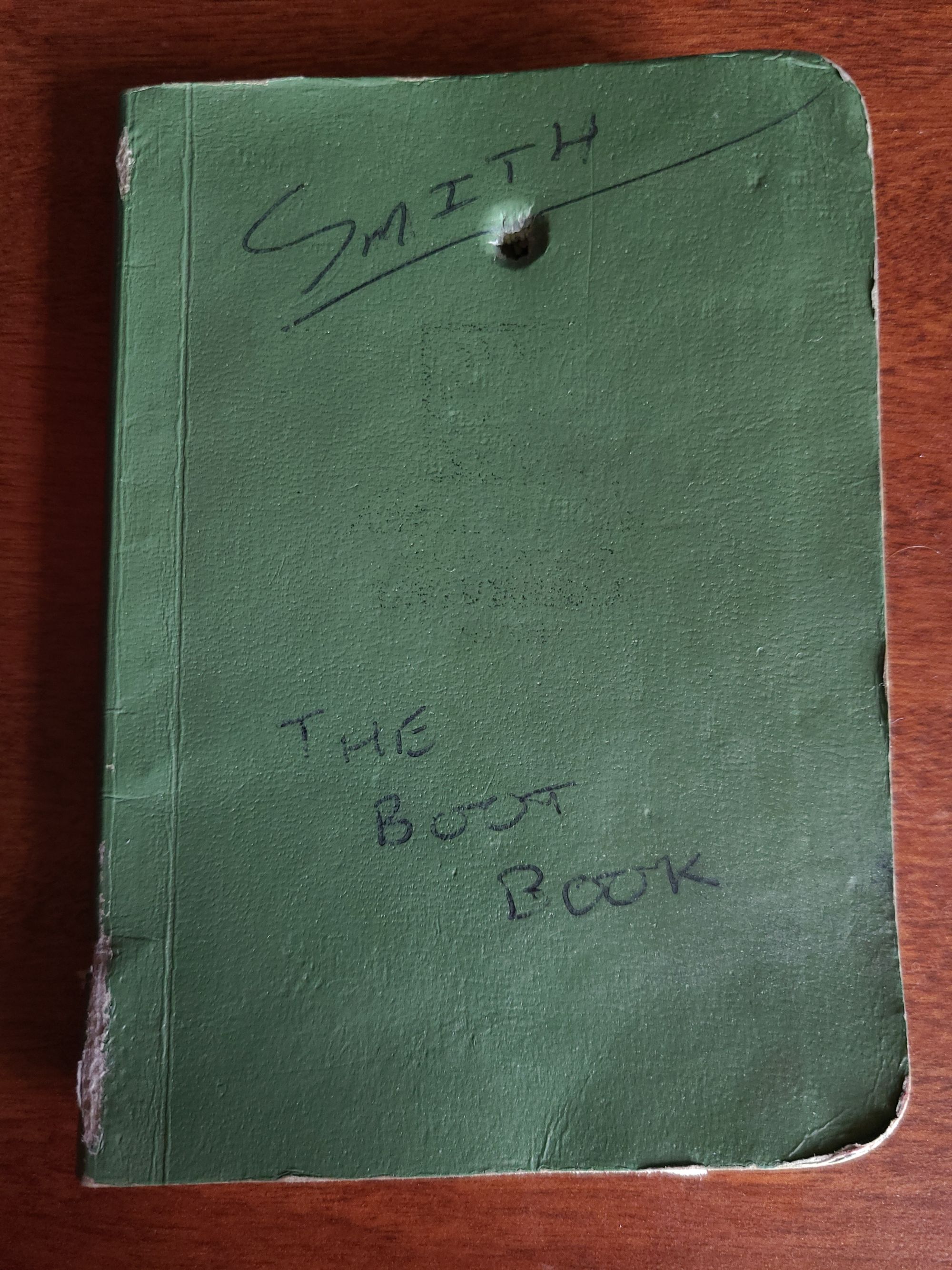
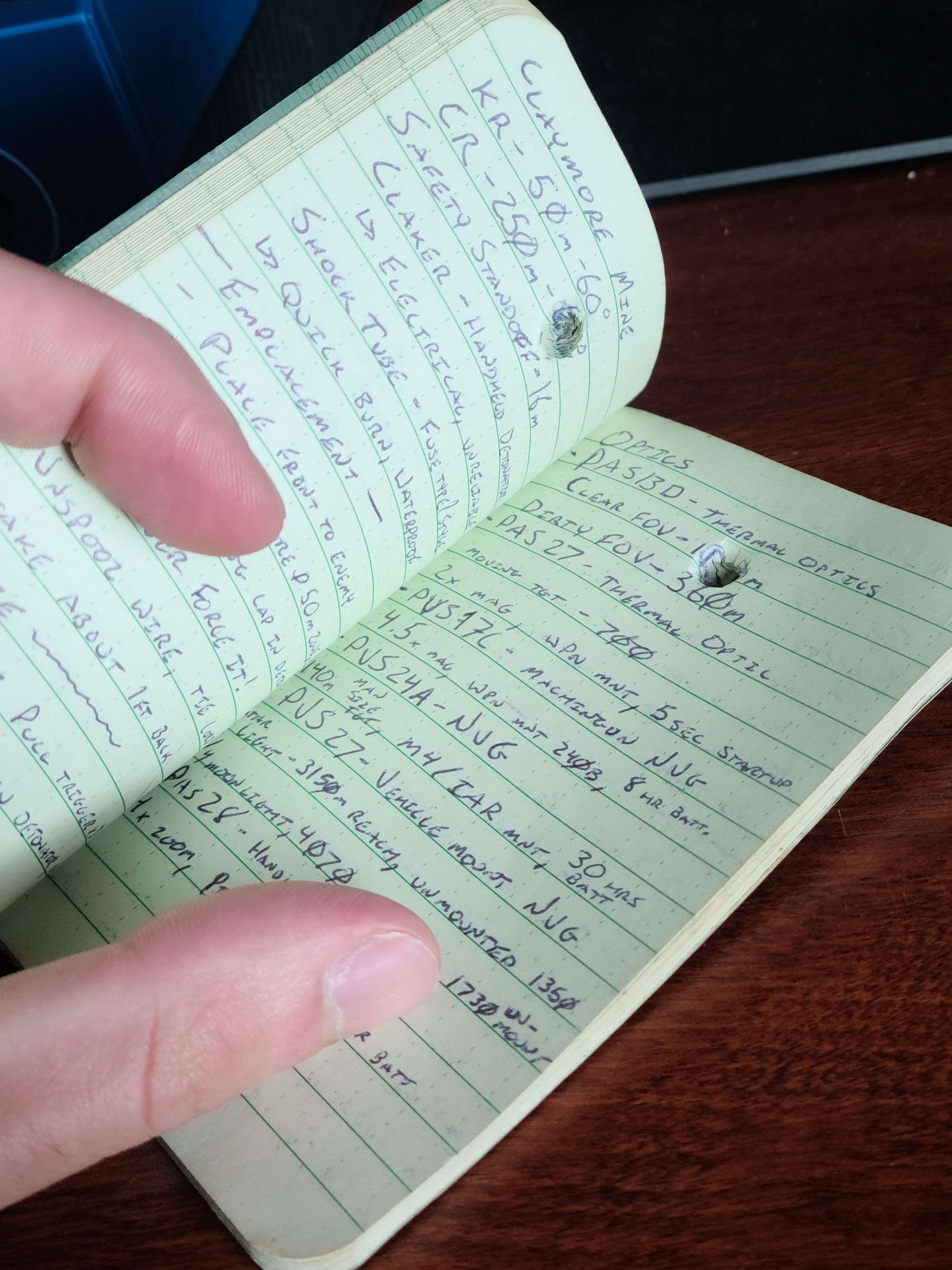
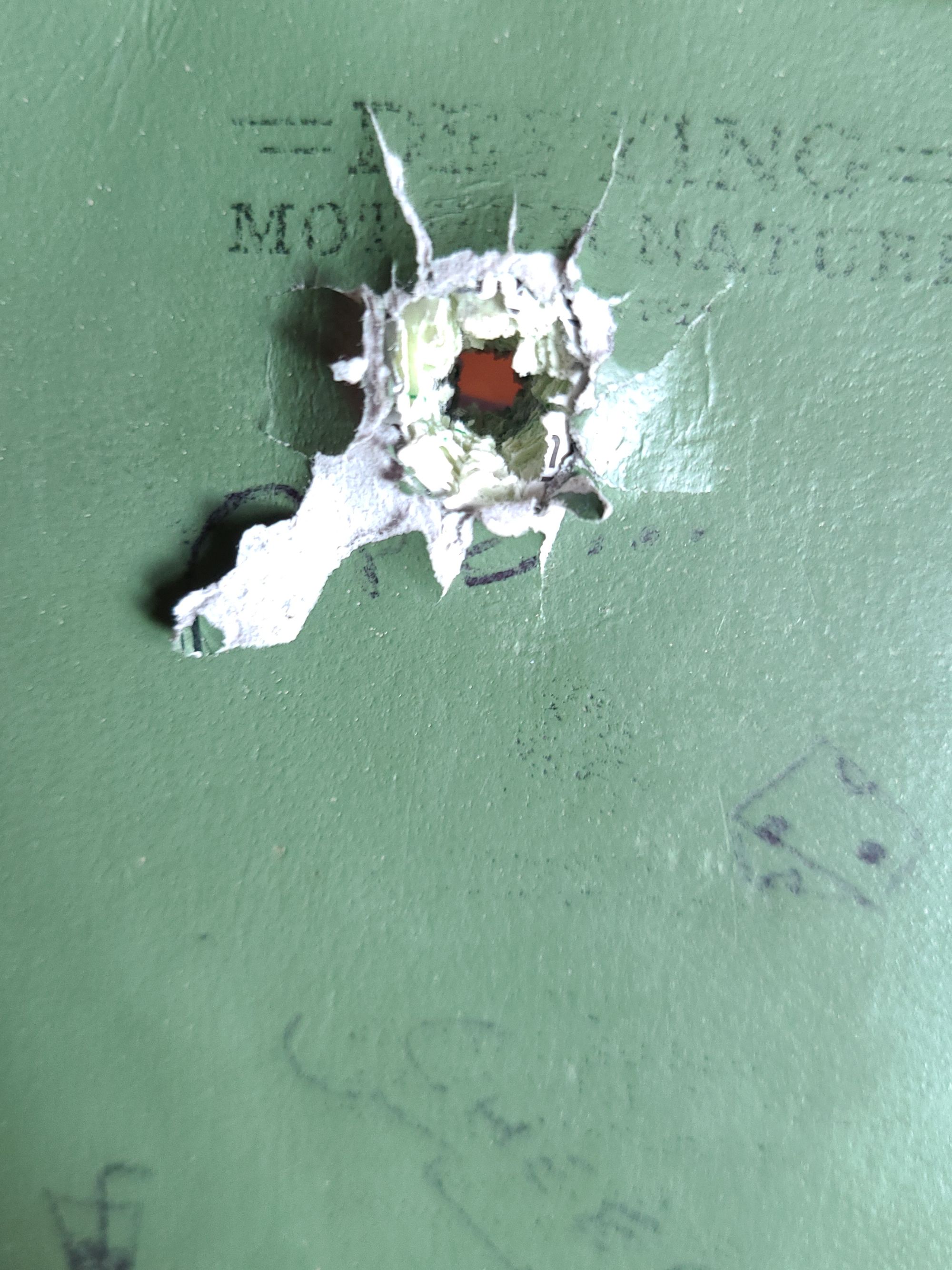
The rest of his company flew to Kuwait. After a couple days of rest, Ball assembled his troops. The captain wanted to tell them it wasn’t their fault. He said he’d given them an impossible task — that he wasn’t able to give them what they needed to be successful.
If they felt they’d failed in any way, Ball told them, it was on him.
On Sept. 17, the military launched an investigation into the attack at Abbey Gate. The investigative team, led by Brig. Gen. Lance Curtis, spoke to more than 100 military personnel and reviewed drone footage, official communications and GoPro video submitted by Marines.
“The attack was not preventable at the tactical level,” their report concluded. The military had to leave the gate open in order to get the maximum number of civilians out and avoid abandoning the British troops. The investigators commended Ball, Sullivan and other commanders on the ground for their performance.
But the report left key questions unanswered. For one, who decided to leave open the unguarded routes to the gate? State Department and White House officials say they were not included in the decision. Ball told investigators he wanted to block those routes to Abbey Gate, but it was hard to find materials to do so. Ball said that someone, whose name is redacted from the report, “convinced” him the passage was “the only truly safe entrance for people being hunted by the Taliban.”
Another, larger question: Could all those deaths have been avoided with different decisions from top U.S. officials weeks or months before Aug. 26?
That question may be addressed in another, ongoing Pentagon investigation into the entirety of America’s withdrawal from Afghanistan.
The gunfire after the blast also remains a source of controversy. Initially, Pentagon leaders told the public that Islamic State gunmen opened fire on civilians and service members. The investigators later determined that wasn’t true. The only shooters they identified were American and British troops. The investigators said that one group of Marines fired at an individual on a nearby roof who they believed had an AK-47. Two groups of British soldiers fired warning shots into the air. And another Marine fired four bullets over the head of a “suspicious individual.” The investigators said no civilians were hit by NATO forces but acknowledged that a “rogue Taliban member” may have fired at Marines.
Many Afghans, including the Mohammadis, insist that NATO forces shot at civilians after the explosion. Doctors who treated civilians at hospitals around Kabul remain convinced that they saw wounds from bullets, not only ball bearings. Some Marines still believe they saw an enemy on a nearby rooftop firing into the crowd.
Pinpointing the exact cause of all their wounds may never be possible. At least 45 American troops were injured in the attack, and the number of Afghan wounded was estimated to be over 200.
One Marine was left paralyzed. Another had his arm and leg amputated.
Mujtaba Tahiri died in the blast as he tried to get closer to the Marines and show them his records. After days of searching, his family finally found his remains in the morgue at the Wazir Akbar Khan hospital. His surviving relatives are still hoping they can somehow use Mujtaba’s visa documents to come to the U.S. They are barely eating now, surviving mainly on aid deliveries of rice.
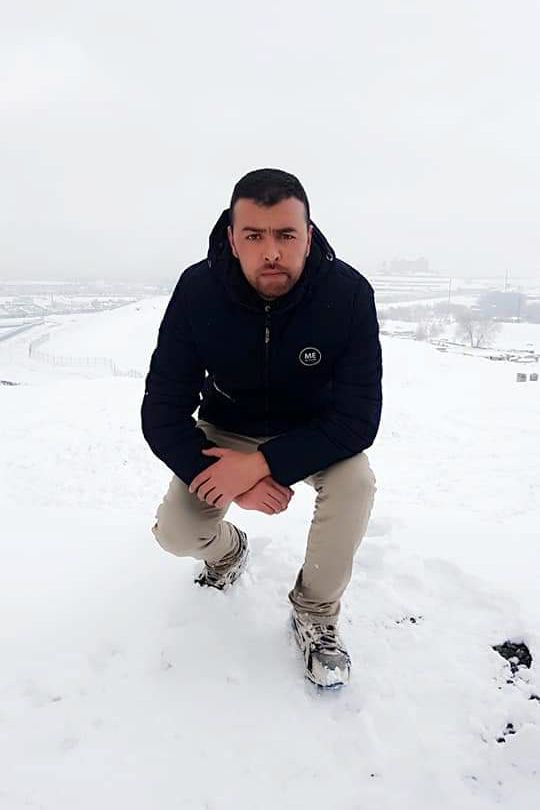
The Haidaris are still in Kabul, trying to find work. Massood’s cousin, Ali Reza, was killed in the attack. He was 19 years old.
Living in fear of the Taliban, the couple are constantly reminded of why they took the risk to flee in the first place. “We don’t expect a better life here,” Massood said.

Castillo is back in the United States and out of the Marine Corps. He finished his four-year contract and was working at the front desk of a gym in his hometown, but he recently accepted a seasonal job fighting wildfires in New Mexico. He hopes to eventually make his way up to a municipal fire department.
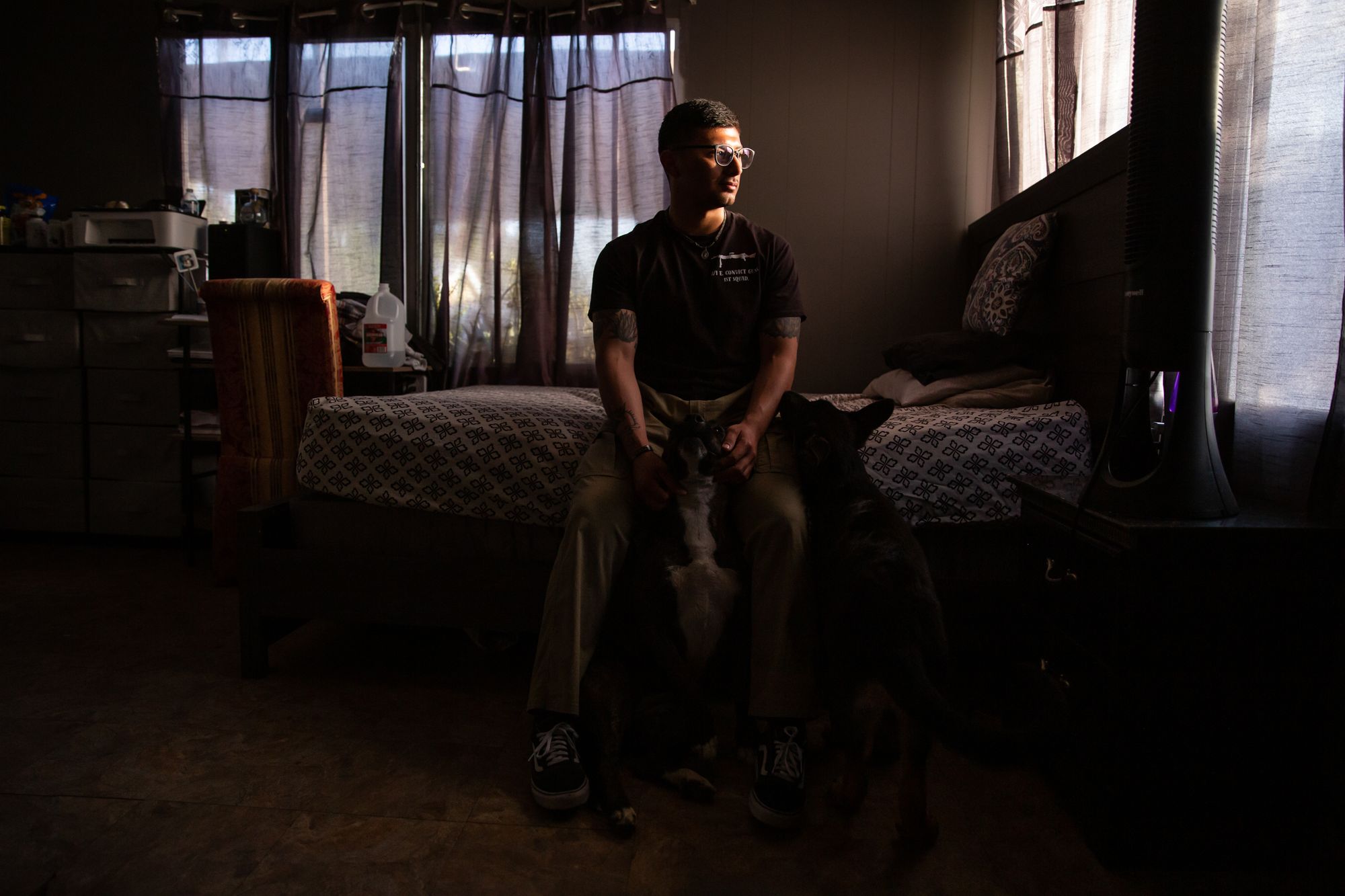
Smith is stationed at Camp Pendleton, a Marine base near San Diego, where he has been reassigned to a unit for wounded service members. He walked again for the first time on Sept. 4 and is hoping to return to full duty soon.
He often visits the grave of his friend, 20-year-old Kareem Nikoui, who was standing next to him when the bomb went off. Smith still wears the pair of glasses he had in Kabul. A piece of shrapnel is embedded in the right lens.
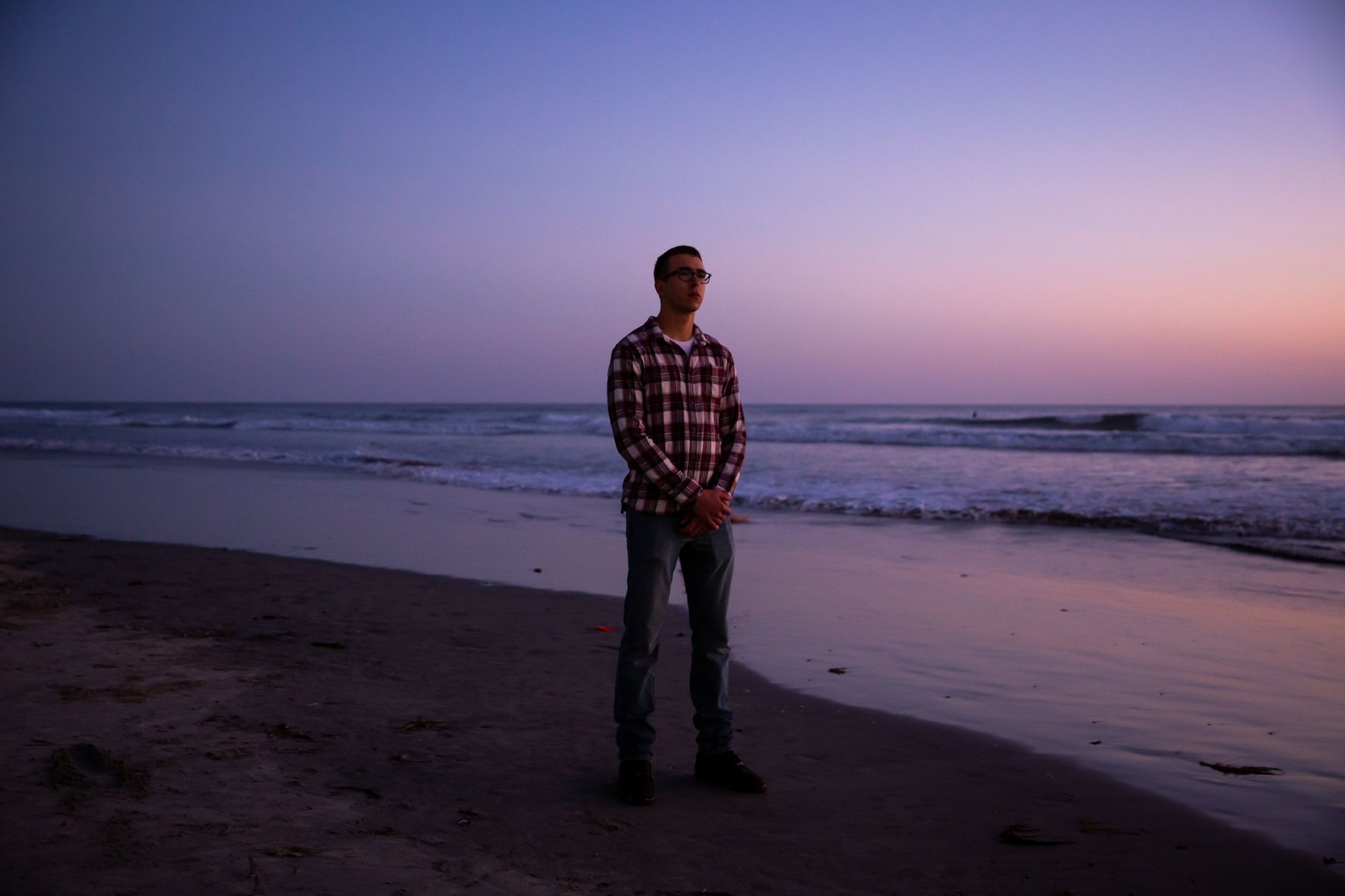
Wilson, the ambassador, is proud of his contributions to the successful evacuation of so many people. But he can’t help questioning himself.
“I spent the month since leaving, every day, going over what we did and didn’t do,” he said. “That’s a burden we all have to carry for the rest of our lives.”
The afternoon of Aug. 27, Shabir Mohammadi’s uncle Rostam went to the Emergency Surgical Centre, an Italian-run trauma facility in Kabul, to look for Shabir. A guard outside told him no visitors were allowed because of COVID-19 restrictions, but Rostam begged him to make an exception. The guard relented, telling him he had five minutes.
Inside, Rostam found Shabir hooked up to an oxygen mask. Rostam took his hand and kissed him on the forehead.
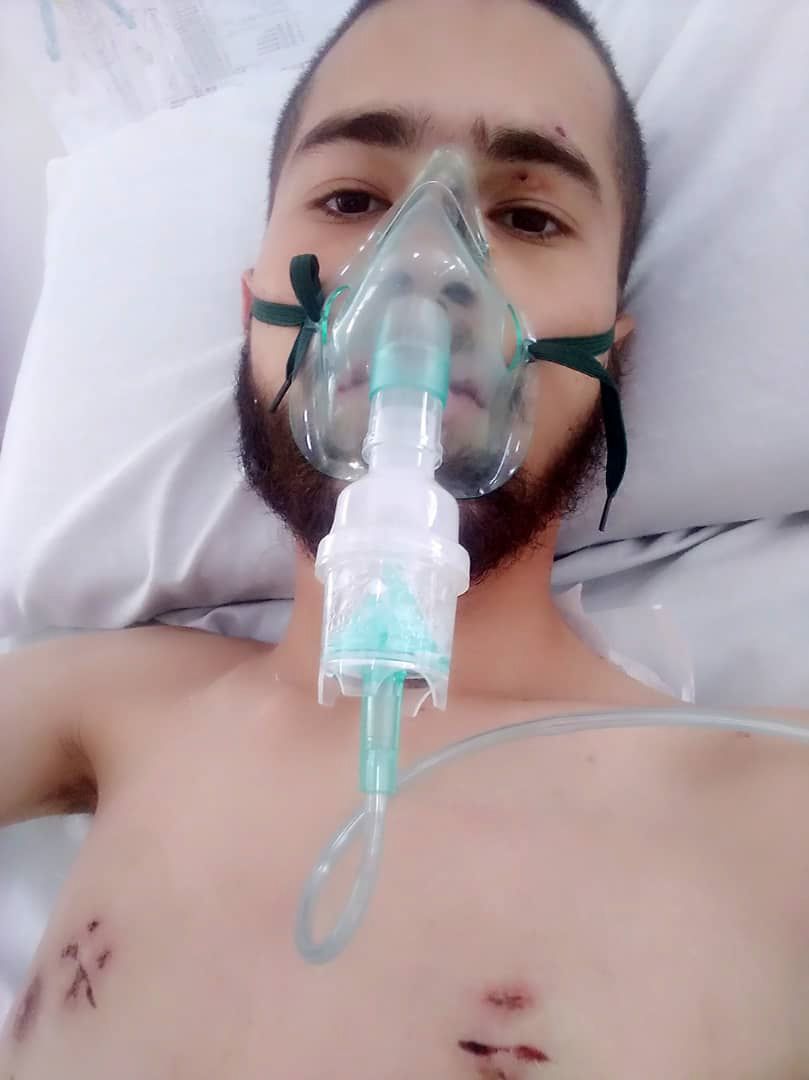
“How are you, my dear?” he asked.
Shabir just nodded in return. He couldn’t speak. His spine had been severely injured. He was partially paralyzed from the waist down.
But he was alive.
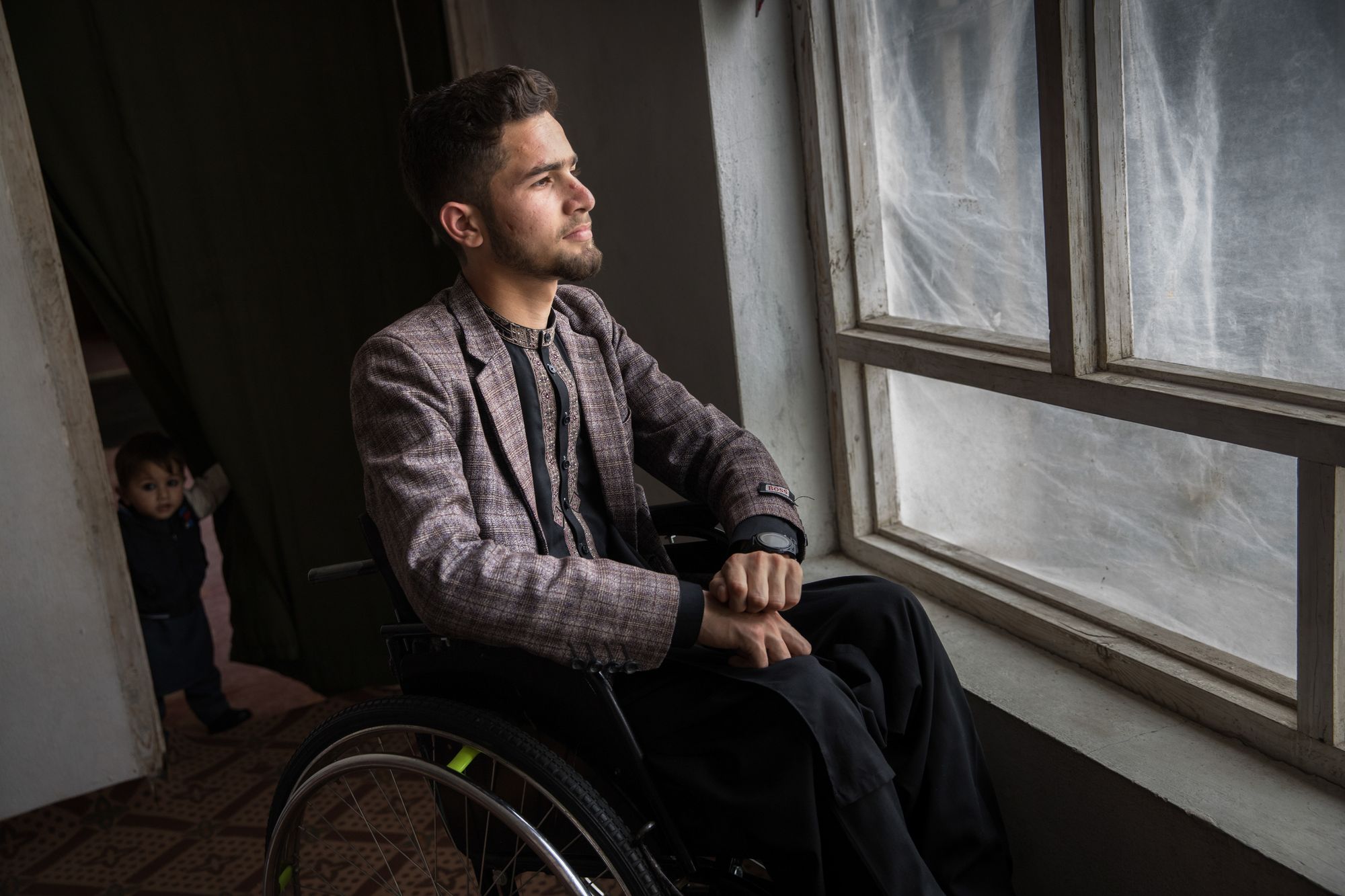
Alex Mierjeski and Doris Burke of ProPublica contributed research.
